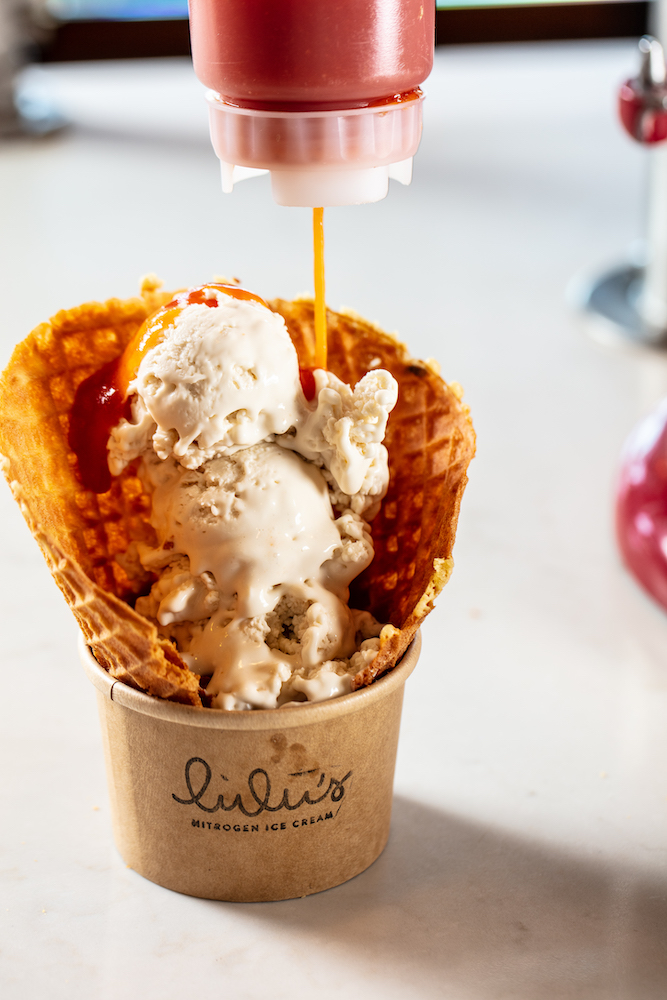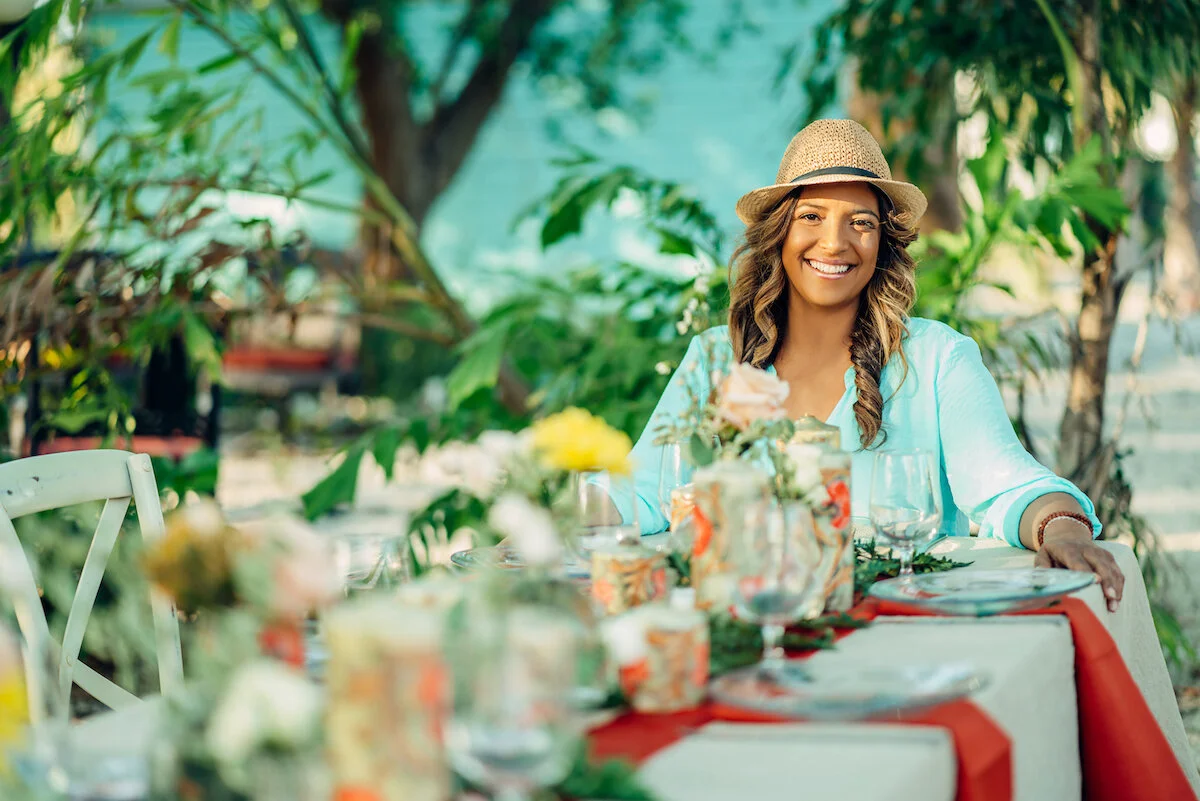Is Sorrel Ready for the Spotlight?

Sorrel – a holiday home brew esteemed among family and friends – is in the spotlight as a new generation brings the spiced beverage to the masses.
In an area of Brooklyn where Caribbean culture thrives and afternoon strolls easily lead to roti shops and to meals of rice and peas, sorrel is easy to come by. The drink is sold in opaque plastic bottles and is poured from dispensers where it shares the counter with fruit punch or some bright orange beverage.
Around these parts, it is just another Caribbean drink.
But the history of sorrel – of how the hibiscus plant arrived from Africa to the Caribbean and made its journey into the United States – is woven into the story of the people who drink it.
Simply put, sorrel has been around for generations.
However, a new crop of entrepreneurs are trying to bring the traditional drink to the masses.
“I call it Caribbean-approved because it's very important that when Caribbean people try this drink, they're like, ‘Oh, this is the real thing,’ said Nzinga Knight, who launched Brooklyn Brewed Sorrel in 2018.
Ms. Knight fondly remembers drinking sorrel as a child. On the weekends, her family would visit a Trinidadian restaurant to eat mouthfuls of doubles (a doughy chickpea sandwich) in between sweet sips of sorrel.
“I have always really loved sorrel,” Ms. Knight said. The drink is spiced with cinnamon, cloves and ginger, which makes it both alluring and memorable.
Its dark red color, a residual effect of brewing the hibiscus petals, also makes it easy to spot.
Ms. Knight could spot the drink nearly everywhere while growing up in East Flatbush, Brooklyn. It was at restaurants and house parties, and it was always in a plastic jug.
Her Brooklyn batches were in elegant glass bottles — like a fine wine.
Her goal to elevate the product seemed to be working. Business was on the upswing, and several stores, including a wine and cheese shop, began carrying her product. But when the co-working kitchen where she operated abruptly closed its doors in October 2018, her business was left in limbo. Ms. Knight remained positive. She had a few months of inventory, which provided a cushion as she searched for another facility. Plus, she could always go back to working out of her personal kitchen.
Carving out a New Niche
Sorrel is made from brewing the flower petals of the roselle plant, a type of hibiscus that is native to India. The plant was brought to Africa and then to the New World. The drink is made by boiling the dried petals, above.
Jack Summers took a different approach when he decided to commercialize sorrel in 2012. “I created a brand new beverage for the liquor industry,” he said. His versions were similar to the one he grew up with, which were always infused with rum.
He created a product that already included a type of grain alcohol. He wanted to be on every shelf in America.
“I wanted to make sure that we did not get sold just to Caribbean people,” he said. To differentiate his drink from non-alcoholic versions of sorrel, his brews were spelled with one r and his drinks were placed in vintage glass that was inspired by milk bottles from the 1920s.
After giving it a good go, his business ran out of money and shuttered in 2016.
Mr. Summers will continue making sorrel this holiday season, but just for a small audience of family and friends.
Small businesses are not alone in trying to scale up the drink. Companies like Heineken also see potential in being able to bottle the sorrel’s Caribbean flavor.
“My impression of sorrel was that it was for older Caribbean people,”
“You associate it with growing up,” said Nasha-Monique Douglas, a senior brand ambassador for Red Stripe, which is owned by Heineken. Ms. Douglas, who was raised in Jamaica, drank home-brewed sorrel during the holidays. As a child she enjoyed it poured over ice. Now she drinks home-brewed versions spiked with vodka or white rum. The very thought of sorrel sends her down memory lane: the “big Christmas dinners with the baked chicken, ham and sorrel,” she said.
In 2013, Red Stripe tried to cash in on that nostalgia by introducing a sorrel-infused beer for the holiday season. Ms. Douglas said it performed so well that the company decided to keep it stocked year-round. But, as of yet, the drink is only sold in Jamaica.
While she said the company is looking to expand, and recognizes the demand, more research is needed to figure out the right place and the right time to launch Red Stripe Sorrel beyond the island.
How a Holiday drink became an everyday affair
The reason sorrel became a holiday beverage likely had to do with its harvesting season. In Jamaica, hibiscus was traditionally planted around August and reaped in late November or in December. Consequently, the drink was punctuated with memorable holiday spices.
Now sorrel is harvested year-round.
At Ode to Babel, a bar and lounge in Brooklyn, the sorrel drink was brought in as a nonalcoholic alternative. It is served neat, with ginger beer, or as a virgin gimlet with just a bit of agave and spritzer.
Marva Babel (a co-owner) said that sorrel offers a certain depth of flavor. Though, it wasn’t until she had Brooklyn Brewed Sorrel that she became aware of the drink’s complexity.
“My impression of sorrel was that it was more for older Caribbean people,” Ms. Babel said. She grew up seeing sorrel being served at Caribbean restaurants around the city, often in some big jug that was placed behind the counter. “It was always someone’s auntie or uncle or grandparent bringing in the sorrel, and that was just my notion of it.” Now, she sees things differently.
“There are various herbs and spices that are hinted in the drink,” she said. “It’s just really rich.”





